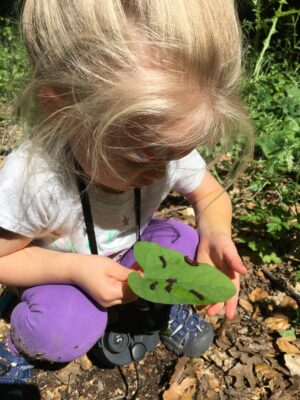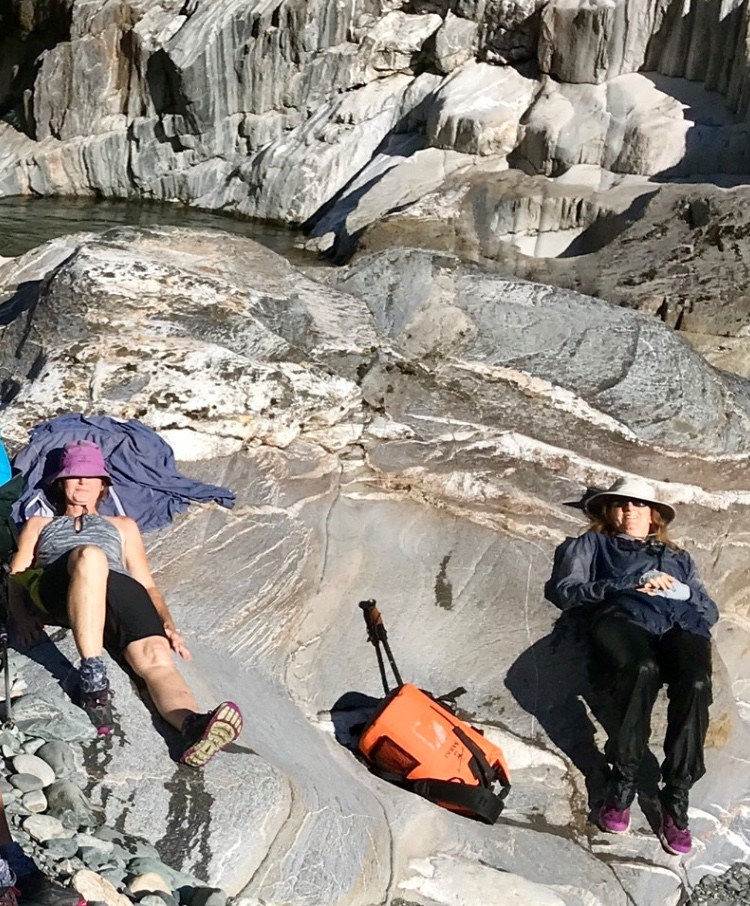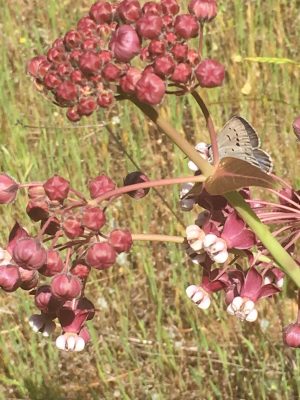Dear Friends and Aligned Organizations:
Today AEL submitted comments to the State Water Board on the proposed Carvana project – a 10,500 car, 111 acre parking lot and maintenance yard on West Placer’s grasslands and vernal pool wetlands. The public hearing on this project will be held on February 18/19. Zoom instructions are at the end of the letter. Please join us at the public hearing and speak to the critical nature of grasslands and wetlands to climate mitigation, species conservation and water quality. Together we’re a stronger voice
January 19, 2021
To: Central Region Water Quality Control Board
c/o Greg Hendricks and Lynn Coster, Senior Environmental Specialists
CA Water Quality Control Board
From: Alliance for Environmental Leadership (www.enviroalliance.org)
RE: WDID No. 5A31CR00535 Carvana Project Vehicle Inspection Center Project
Dear Chair and Members of the CRWQCB:
The Alliance for Environmental Leadership (AEL) is a coalition of sixteen (16) environmental and civic organizations in Placer and Nevada Counties. We herein jointly ask that State’s Water Board deny the application for a grading permit WDID No. 5A31CR00535 Carvana Project.
Coastal Partners, LLC submitted an application to the Central Valley Regional Water Quality Control Board for a Section 401 Water Quality Certification for the proposed Vehicle Inspection Center Project.
Coastal Partners, LLC has not completed an EIR for the project and is attempting to piggyback this 401 permit approval onto the severely flawed Sunset Area Plan/Placer Ranch (SAP/PR) EIR. Placer County, under appeal by a citizens’ group “Placer County Tomorrow”, determined on November 4, 2020 that an EIR was not needed for the Carvana project because the project is consistent with the existing Sunset Area Plan/Placer Ranch EIR. However, the SAP/PR EIR never anticipated this intense level of industrial use. Instead, it analyzed a SAP development supporting primary wage-earner jobs and high tech manufacturing. The SAP/PR EIR is being challenged in Court by Center for Biological Diversity (CBD).
The CRWQCB has issued a Tentative Order for the Carvana Project. We find that the statement of overriding considerations provided in Attachment C of the Tentative Order is vague, conclusory, and does not allow the public to assess the Central Valley Water Board’s reasoning for accepting the Project’s significant unavoidable impacts.
The Tentative Order merely states, “The Central Valley Water Board has considered the economic, legal, social, technological, and other benefits of the Project against its significant unavoidable impacts to water quality and finds that the specific economic, legal, social, and technological benefits of implementing the Project—including economic benefits, local job growth, and employment opportunities—outweigh the significant and unavoidable impacts identified above.” (Attachment C, p. 23).
This conclusory statement does not show that the Central Valley Board has reached its own independent determination that the benefits of the VIC outweigh the significant unavoidable impacts. The Central Valley Water Board should not issue a WDR until a detailed analysis supporting the conclusion that these impacts in fact cannot be avoided, and that they are justified by the VIC’s benefits, is presented to the public.
Lawsuit – The CBD lawsuit challenges the late February 2020 Placer County Certification of the Programmatic SAP EIR, and adopted General Plan amendments and massive rezonings because the EIR’s objective – a primary wage earner community anchored by a promised CSU campus . CSU released a study on July 2, 2020 that determined that no new CSU campuses are warranted. The CSU study’s conclusions were published only three months after CSU accepted the 307 acre Placer Ranch donation. An MOU between the developer, Placer Ranch, CSU and Placer County was subsequently executed that allowed the “donated” land to revert back to the developer in only 36 months. Placer County will never see the promised campus, but is continuing to advance the Sunset Area plan.
Placer County’s Zoning Administrator approved the Carvana project over citizen objection. Subsequently citizens appealed the Zoning Administrators decision to the Planning Commission and later to the Placer County Board of Supervisors. All citizen concerns were ignored. Citizens are consistently denied their civil right to meaningfully participate in governmental decision making in Placer County. Therefore, we look to the State Water Board and the authority vested therein to address our concerns.
The Carvana Project Vehicle Inspection Center is an auto repair yard proposed to replace carbon sequestering grasslands. The 10,500 car parking lot and auto repair facility processes used cars through a 190,000 sq.ft. four-lane auto repair assembly-line employing 850 low wage workers. An inventory of over 10,000 cars is maintained and these cars are stored on a vast parking lot over a 111 acres of grassland and vernal pool wetland. (To put this in perspective – the former ARCO arena provided parking for 7,000 cars). Oils, solvents and fluids in the used cars are removed and replaced on the assembly line. Used oils, solvents and fluids are processed on site and transferred to the Regional Landfill. Naturally, oils will disburse over the 111 acre site and make their way into the ecosystem and food chain.
The project description for the Sunset Area, and for which Carvana is a part, anticipated a California State University, supporting high-tech, primary-wage-earner jobs and environmental impacts associated with these specific white collar uses. The Carvana land use and the myriad of impacts associated with it (VMT, waste disposal, water consumption etc) are inconsistent with and outside the scopethe County’s own EIR objectives as stated in the programmatic EIR. For these reasons, citizens maintained to the Board of Supervisors that an independent project level EIR be prepared for the Carvana project. We urge you to deny the 401 permit until a project level EIR is prepared for the reasons described below:
The Carvana business model is what is now understood as a disruptive technology. Carvana delivers vehicles to buyers’ cars on a truck network. This marketing innovation will significantly alter the way that consumers, industries and businesses operate. It will sweep away the systems, businesses and employees of traditional auto sales as consumers adopt new habits. The implications for local government tax generation, VMT and urban decay are significant; but have not been analyzed in the SAP EIR. Therefore, we urge you to deny the application for a grading permit for this project until an independent project level EIR is completed and certified.
On 5 October 2020, U.S. Army Corps of Engineers issued a letter to Coastal Partners, LLC with notification that the aquatic resources impacted by the project are excluded waters under 33 C.F.R. section 328.3, subdivisions (b)(1) and (b)(3) of the Navigable Waters Protection Rule and are not regulated by the U.S. Army Corps of Engineers. The Army Corps decision was based on wetland delineations prepared by consultants employed by the applicant. The applicant’s wetland delineation is significantly different from a comprehensive, single study wetland delineation map prepared by Carol Witham, John Vollmar and John Schweitzer, commissioned by the US Fish and Wildlife Service. The USFWS map has many significant differences in both the location and diversity of vernal pools, riparian areas and wetland. We ask the Water Board to seek a reconciliation of these differences from the County and USFWS before making a determination under Waste Discharge Requirements for discharges of dredged or fill material to waters of the state.
We urge the Water Board to fulfill their duty to enhance and protect these natural resources, particularly in this time of climate crisis; and apply rigorous scientific review to verify information provided in the application before you. We ask the Water Board to also consider whether a 401 Permit for this project will be in violation of a range State policies and Gubernatorial Executive Orders, including, but not limited to: 1) agland conservation, 2) Statewide CO2 reduction, 3) vernal pool preservation 4) groundwater protections and 5) openspace conservation.
Citizens’ Plan and the SAP EIR – The Sunset Area Plan EIR elicited extraordinary public interest. In the Final EIR hearing, over 77 written comments and as many oral comments were delivered from citizens who are concerned 1) for the project’s 60 significant and unavoidable environmental impacts and 2) its failure to provide any safe affordable family housing.
Citizens self-funded a fully-developed and economically-supported alternative, the “Citizen Initiated Smart Growth Plan (CISGP)”. Links to this plan are below. The consultant for the Sunset Area Plan project EIR, Assent Engineering, proposed three less environmentally-harmful alternatives (that met County objectives). Despite this, Placer County Board of Supervisors rejected both the CISGP and the EIR’s consultants three (3) environmentally superior alternatives and approved the EIR with a finding of overriding consideration that focused on development of a California State University Campus. CSU has since determined that no new CSU campuses will be constructed (July 2020).
In contrast, the CISGP design protects the ecosystem services provided by the land and respects the seasonal changes of the natural systems. It also delivered on the County’s job center vision by providing comparable employment and business opportunity. It sets straight the jobs housing balance, enables public transit and supports quality of life and character of place. The CISGP provides twice the number of housing units than does the Placer Ranch/County’s development plan; with units priced to match incomes of future workers. Placer County has not caused developers to produce a single unit of affordable housing in recent years. No housing provision is made for the 850 low wage work
3
As described on page 96 of the CISGP, the nature of soil in the project area will create bulge effects during the wet season which will cause foundation and road cracking. The only way to ameliorate this situation is to remove soils to significant depth and to replace them with a concrete like additive. The impact of deep grading and soil reconstruction to avoid the seasonal bulge of soil (as it seeks to absorb water) and the effect of what will be essentially underground barriers to natural hydrologic functions on the site is not considered in this project application. There are two watersheds in the project area. The CISGP provides FEMA and USGS maps on p. 87 that will be useful to the Water Board in analysing these hydrologic issues. We ask the Water Board to consider the effects of deep grading and soil reconstitution on the four existing wetland and vernal pool mitigation banks that are within the Carvana watershed.
Vernal Pools – The Carvana project 401 permit application should be considered in context with other pending Placer County developments. The Carvana project, Placer Vineyards, Amoruso Ranch, City of Lincoln Villages and Placer Ranch/Sunset Area Plan will together create an unprecedented local demand for treated water and cause disruption to approx. 26,000 acres of Cometa-Fiddyment, Fiddyment-Kaseberry and Alamo-Fiddyment soils. These soils are distinguished by the depth of sponge-like topsoil over clay. During the rain-y season, these fluffy soils become saturated to 40-60% water, moderating runoff and retaining water for slow discharge into the dry season. The sponge-like nature of the soils is an important factor to mitigate flood and a control for fisheries’ needs. The cumulative impacts of these projects on water retention, flood control and dry season discharge necessary to support fisheries has not been analyzed.
Cumulatively, these projects will destroy Placer County’s remnant vernal pool habitats. The Placer County Report of Science Advisors, Jan, 2004, states that urbanization has resulted in substantial losses of vernal pool ecosystems in Placer County. Vollmar Natural Lands Consulting estimated in 2014 that of Placer County’s 117,289 acres of vernal pool habitat, 75% had been destroyed. The Sunset Area Plan, of which Carvana is a part, supports 17% of Placer County’s remaining vernal pools. The State of Ca, under the Natural Resources Protection Act, specifically protects vernal pools and the animals that are specifically adapted to living within them.
Water Use and Pollution: The water needs for Carvana are provided through the Bear Yuba Canal system – an aging system which may not have capacity to serve the vast development proposed in West Placer County. The Ophir Water Treatment Plant which was to break ground in 2018, did NOT break ground and according to Placer County Water Agency (PCWA), it could be 2029 before they break ground.
In periods of drought, Carvana would be served through groundwater wells. The Placer County Groundwater Sustainability Plan is not and will not be finished for years. The Carvana project counts on recycled water quite heavily, but the means to utilize recycled water, rather than groundwater is only speculative, as there is no plan for how recycled water will be captured and safely utilized. The SAP project EIR indicates there are presently two existing PCWA wells drawing at 1000 acre feet per year. And it also appears to indicate that two new wells would be drilled for the SAP project in the event that primary water supply for Carvana is depleted. The new wells are proposed to have a capacity of 1000 acre feet per year. The SAP EIR states that the wells will only be employed in drought years and only once per drought year . There is no plan if there is a persistent multi year drought.
Water to serve the SAP/Carvana is from the North Fork of the American River. Water from the American River is critically oversubscribed. Only three years ago, Folsom Lake was drawn down severely and emergency water rationing was imposed on Folsom residents. If the Governor determines that river water be diverted to support salmon fisheries, will groundwater substitute for North Fork supply to Carvana? How will ground water pumping be monitored? How many wells are anticipated to be part of the project – 4 wells altogether for dry year water production, or are there only two wells (e.g. the present PCWA wells)?
The SAP EIR did not consider the 6 new wells proposed by the City of Lincoln for Village 5 when analyzing cumulative impacts to groundwater supply.
There is no condition or mitigation measure that is enforceable that will limit the wells to single-dry year pumping only.
The SAP EIR discusses the monitoring of adjacent wells during the use of the Placer Ranch/Sunset Area Plan wells to determine potential adverse impacts to groundwater supply. However, the EIR does not specify what is considered to be an adjacent well. It is undetermined therefore if existing agricultural wells north of the Plan area be included in the monitoring program.
The SAP EIR and subsequent Carvana analysis fail to specify conditions or enforceable mitigation that would compel and enforce such well monitoring. In times of severe drought conditions, mass extinction and climate uncertainty, water-use intensive projects like Carvana should not be considered over the benefit of residents and species. Water supply is very often the decisive factor in land-use decisions, thanks to State laws requiring developers to prove they can obtain enough water to serve their projects. Will Carvana be required to reduce water consumption during drought or continue to drain water creating additional hardships on local residents and to the detriment of fisheries?
There is no analysis of the impacts of dry-year pumping on flows in Auburn Ravine and Pleasant Grove Creek. Nor is there any analysis of the impacts of well pumping on four existing wetland and vernal pool “Mitigation Banks” within the Sunset Area/Placer Ranch project area. Wouldn’t dry year pumping of over 2000 to 4000 acre feet per year of groundwater potentially impact flows in Auburn Ravine?
The project EIR states that little to no flows existed in Auburn Ravine during the Fall season. This is incorrect. The Scheiber family which has farmed in the Auburn Ravine watershed in Lincoln, has diverted water from the Ravine for 100 years and before delivery from PCWA, there was adequate fall flows to accommodate water diversions from the Ravine for use on their property.
If at some point in the future, the wells are to be used more often than as set forth in the EIR, will there be a requirement for additional environmental review prior to allowing any additional pumping? Should pumping be an allowed use for a new city, when groundwater supply is unknown?
It is undetermined if municipal wells would have priority over an overlying groundwater right of existing farmers and homeowners. The County has done no analysis of impacts of pumping proposed for Carvana on existing overlying wells for agricultural uses. Neither has the public been informed or Placer County nor PCWA determined if wells for the SA/Placer Ranch project will have priority over landowners with existing overlying groundwater rights. Why not?
There is no plan, mitigation measure or contingency – or study – relating to the potential for contamination of groundwater from the Carvana site and due to processing of automobile fluids, oils and solvents at the Western Placer Landfill. This information was omitted from the SAP EIR.
While the EIR references the landfill and its regulation by the RWQCB – there is no contingency or evaluation of potential contamination to groundwater resources. In section 4.9.2, page 4.9.6, under Groundwater Quality; it says “Contamination of groundwater with VOCs was first identified at this site in 1995” (landfill). If there are a total of four wells that all get turned on in times of drought, as well as all of Lincoln’s wells, what will the cumulative effect be on spreading the contamination throughout the “regional cone of depression” that is discussed on page 4.9.6 under Groundwater Hydrology in the Project EIR?
The application and Project EIR fail to address groundwater recharge and the impact of deep-well pumping on existing agricultural operations and regional ground-water users.
The Carvana projects’ adverse impacts to streams, vernal pools, ponds and other waters individually and cumulatively with other projects approved in the Pleasant Grove/Orchard Creek and Auburn Ravine watersheds have not been analyzed. The cumulative impacts to climate and habitat loss/ecosystem services resulting from conversion of a grassland landscape consisting of soils that function as nature’s sponge and support healthy vernal pools to impervious surfaces, has not been adequately considered.
Flood and Storm Drainage – The Carvana project poses downstream flood and pollution risks. The project proposes to excavate two on-site pits covering 11 acres of habitat, to contain storm water runoff. The CRWQCB cannot reasonably determine that these pits which will also receive residual oils, detergents and solvents from Carvana operations, in addition to storm waters, are inappropriate in this wetland environment. Better analysis of the impacts of on site stormwater runoff and drainage and alternatives to surface storage should be performed. It is required under the Procedures for Discharges of Dredged or Fill Material to Waters of the State that compensatory mitigation requirements must be commensurate with the amount and type of impact that is associated with a particular Order. There has been no analysis or discussion of whether the mitigation plan which uses the WPILF is commensurate with Carvana’s impacts. The Board should not issue the Waste Discharge Requirements Order until a new Wetland Mitigation Plan related to the WPILF is provided. Cumulative development in unincorporated Placer County, Roseville, Rocklin and the City of Lincoln area, which includes the Pleasant Grove Creek and Auburn Ravine watersheds, will increase the amount of impervious surfaces which could increase peak stormwater runoff flows and increase flood elevations.
The tentative Waste Discharge Requirements Order does not sufficiently address compensatory mitigation. The Board is required to consider a project’s proposed mitigation measures prior to issuing a 401 Certification and accompanying Waste Discharge Requirements Order. The tentative order is vague and incomplete with regard to the project’s mitigation; many mitigation quantities in tables in the tentative order simply say “TBD.” The public cannot meaningfully comment on the tentative order unless there is sufficient information about the mitigation measures and the Board’s analysis thereof. The Board should not finalize the tentative order until the public has had the opportunity to comment on the full scope of the mitigations proposed.
In this environment of real time climate change it is simply not feasible to model stormwater containment needs. You may recall as 2018 was winding down, one of California’s leading newspapers suggested, via a front-page, banner-headlined article, that the drought that had plagued the state for much of this decade may be returning. Just weeks later, that same newspaper was reporting that record-level midwinter storms were choking mountain passes with snow, rapidly filling reservoirs and causing serious local flooding.This underscores the unpredictable nature of stormwater retention and the adequacy of Carvana’s stormwater retention plan.
VMT – The Carvana project is intensely auto-dependent and will adversely affect public health in what is the 5th worst air quality region in the nation. VMTanalysis for the project failed to take into account daily deliveries of sufficient vehicles to warrant employing 850 people. Until the Carvana analysis provides the RWQCB with complete and true VMT numbers the Board may not make an informed decision.
The cumulative impacts to climate and habitat loss/ecosystem services resulting from conversion of a grassland landscape consisting of soils that function as nature’s sponge and support healthy vernal pools to impervious surfaces (parking lot), has not been adequately considered.
Endangered Species – As a part of the SAP, the Carvana site is potentially critical habitat for 14 Federally listed endangered species and supports rare high quality vernal pool habitat and farmland. As explained in the CISGP page 82-91 below, SAP project standards are wholly inadequate to provide adequate filtering, protect natural stream meanders and slow runoff. The population density for the 14 listed endangered species and ecosystems that occur within the Carvana site is undetermined because no adequate biological survey has been undertaken. Should terrestrial species be identified, all are proposed to be relocated into the Placer County Placer Conservation Plan area. The Placer County Conservation Plan (“PCCP”). The PCCP however is adopted at the local level, but has not been cleared for implementation by regional, State and Federal level. The proposed PCCP is already functioning at ecosystem capacity at each trophic level. “There is no room at the inn”. Carvana mitigation plans only serve to displace existing residents of the proposed PCCP with species introduced from the Carvana site. This is the same “mitigation” that is proposed for many tens of thousands of acres subject to development in the immediate vicinity of Carvana. There is scarce empirical evidence that species and habitat “relocation” is successful. For the Swainson’s Hawk which travels 10,000 miles to and from Argentina each year, and makes it’s winter home in the west Placer grasslands relocation is not an option. The spade-foot toad, burrowing owls and fairy shrimp have specific ecological niches and chemical bionutrient needs. that cannot be replicated successfully in the PCCP- even if there space in the trophic level into which they are proposed to be relocated. The threatened Western Pond turtle which lives in the Carvana project area will not accept relocation. It will persist in travelling for its lifetime to its home of origin after relocation. We know turtles are among the most threatened of all major invertebrate groups, with 365 species threatened or already extinct due to destruction of habitat.
Grassland Habitat – The high plant diversity represented on the Carvana site sequesters and stores carbon underground and retains it underground even in the event if fire, making them critical to our battle against climate change. Sadly, grasslands in the US are disappearing at a rate exceeding the losses of the Amazon rainforest, but our Governor has enacted Orders specifically targeting grasslands as a means of mitigating climate change. Conversion of grasslands for development causes the loss of the ecological services they provide (in addition to carbon sequestration) such as filtering trillions of gallons of water that goes on to be used for drinking water and helps support healthy fisheries in the American and Sacramento Rivers, the Bay Delta and Pacific Ocean. Destruction of grasslands threatens iconic species and the natural phenomenon of bird migration. Soil – The developments will cause disruption to 111.8 acres of Cometa-Fiddyment, Fiddyment-Kaseberry and Alamo-Fiddyment soils which are distinguished by the depth of sponge-like topsoil over clay. During the rain-y season, these fluffy soils become saturated to 40-60% water, moderating runoff and retaining water for slow discharge into the dry season. The sponge-like nature of the soils is an important factor to mitigate flood and a control for fisheries’ needs. What is particularly grievous is that the destruction of these natural resources is not necessary to fulfil a community need, The cost of the housing product for the Amoruso project far exceeds Placer residents’ ability to pay. The proposed commercial/service uses will never be built out because there is insufficient demand.This is a growth inducing sprawl project. AEL is not opposed to growth, per say, but we advocate for smart growth in Placer and Nevada Counties where populations will grow significantly over the next 50 years. To accommodate this growth without forever losing the natural environment that makes these Counties unique and supports all life, we propose a new land-use vision and new values for
We ask that you deny the Carvana 401 permit application. The degree to which the Carvana project will impact stormwater, water quality and water use are significant and indefensible. The Carvana project is inconsistent with the Governor’s Executive Orders for protection of Species Diversity, Farmland, Climate and Open Space.
BIrds – The project site is within the Pacifc Flyway and supports vast numbers of migratory fowl. Grassland bird species that reside in the project area have declined as much as 80% as have four species of bumble bee that live there – making these critical species at risk of extinction. The site supports the State listed tri-colored blackbird’s only remaining population in Placer County. The application fails to address Project impacts to resident and migratory bird populations or its consistency with the Migratory Bird Preservation Act. Of note, is the status of the Sunset Area/Carvana site as supporting the 2nd highest density for raptors in the USA. The Carvana project’s repair center will operating 18 hours a day with exterior lighting. The 10,500 car parking lot will be illuminated. The effect of light pollution on night skies and on nocturnal hunters (owls) in four adjacent mitigation banks has not been analyzed. Neither has the impact of auto/bird strikes been considered. The impacts to health of water fowl, blackbirds and other grassland birds who will ingest solvents, oils and detergents draining into the 11 acres of flood water retention pits is not addressed. The impact to burrowing owl populations of introduction of light standards and power lines is not addressed. These populations will be adversely affected because they choose to live where perches are absent – a mechanism to avoid predation from other raptors.
Amphibians and Reptiles – The application does not provide adequate mitigation nor address impacts to populations of the listed Western Pond Turtles and several salamander species which are proposed to be relocated as a project mitigation. The relocation plan for these species fails to address the fact that these species forever travel to return to their native nesting sites and therefore cannot be successfully relocated. Listed Spadefoot toads exist in high density populations within the project site. The application fails to satisfactorily address impacts to Spadefoot-toad populations and if relocation is an option for the species. What monitoring measures are proposed during construction, are unfunded, unscientific and cannot support findings that they will not result in population declines.
We look to the California State Water Resources Board to deny the Carvana project 401 permit application because the project is a threat to Placer County’s water resources and the species that depend on them and a threat to public health and well being. We ask the CRWQCB to use its authority to preserve, enhance and restore the quality of water resources for the protection of the environment, public health and all beneficial uses and to ensure proper allocation of water resources and efficient use. The WDID No. 5A31CR00535 Carvana Project Vehicle Inspection Center Project fails in all these measures and must be denied.
Thank you for the opportunity to provide comments and for your consideration of them.
Sincerely,
Leslie Warren, Chair
Alliance for Environmental Leadership
Citizen-Initiated Smart Growth Plan Phase 1 URL: bit.ly/CISGP1
Citizen-Initiated Smart Growth Plan Phase 2 URL: : bit.ly/CISGP_2
ZOOM Meeting Details:
The Central Valley Regional Water Quality Control Board (Central Valley Water Board) has prepared tentative Waste Discharge Requirements (WDRs) for fill discharges to waters deemed by the U.S. Army Corps of Engineers to be outside of federal jurisdiction for the Coastal Partners, LLC, Vehicle Inspection Center Project (Project). The Central Valley Water Board is currently soliciting public comments on the tentative Waste Discharge Requirements in accordance with the Notice of Public Hearing to Adopt Tentative Waste Discharge Requirements, which is attached to this notification.
A public hearing concerning this matter will be held during the Central Valley Regional Water Quality Control Board (Central Valley Water Board) meeting scheduled for:
DATE: 18/19 February 2021
TIME: 8:30 a.m.
PLACE: Online Meeting
In accordance with Executive Orders suspending certain provisions of the Bagley-Keene Open Meeting Act in light of the COVID-19 pandemic, this meeting will be conducted as an online meeting only. Please visit our website for information on
How to participate in online meetings at: (https://www.waterboards.ca.gov/centralvalley/board_info/meetings/).
A Public Hearing has been scheduled for the Central Valley Water Board to consider adoption of the tentative Waste Discharge Requirements at its 18/19 February 2021 Board Meeting. Any comments or recommendations you or others may have concerning the tentative Order must be submitted in writing to the Central Valley Water Board office by 5 p.m. on 9 January 2021 for Amoruso and 19 January for Carvana. Written materials submitted after this date and time will not be accepted and will not be incorporated into the administrative record if doing so would prejudice any party. Please note that the tentative documents will receive internal legal and management review during the public comment period.
If you have any questions regarding the tentative WDRs, the scheduling of the Public Hearing, or the above requirements please contact Lynn Coster at (530) 224-2437, Lynn.Coster@waterboards.ca.gov







